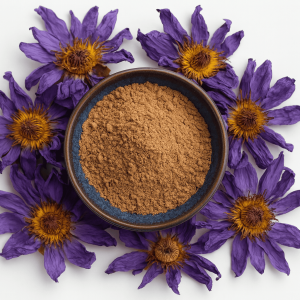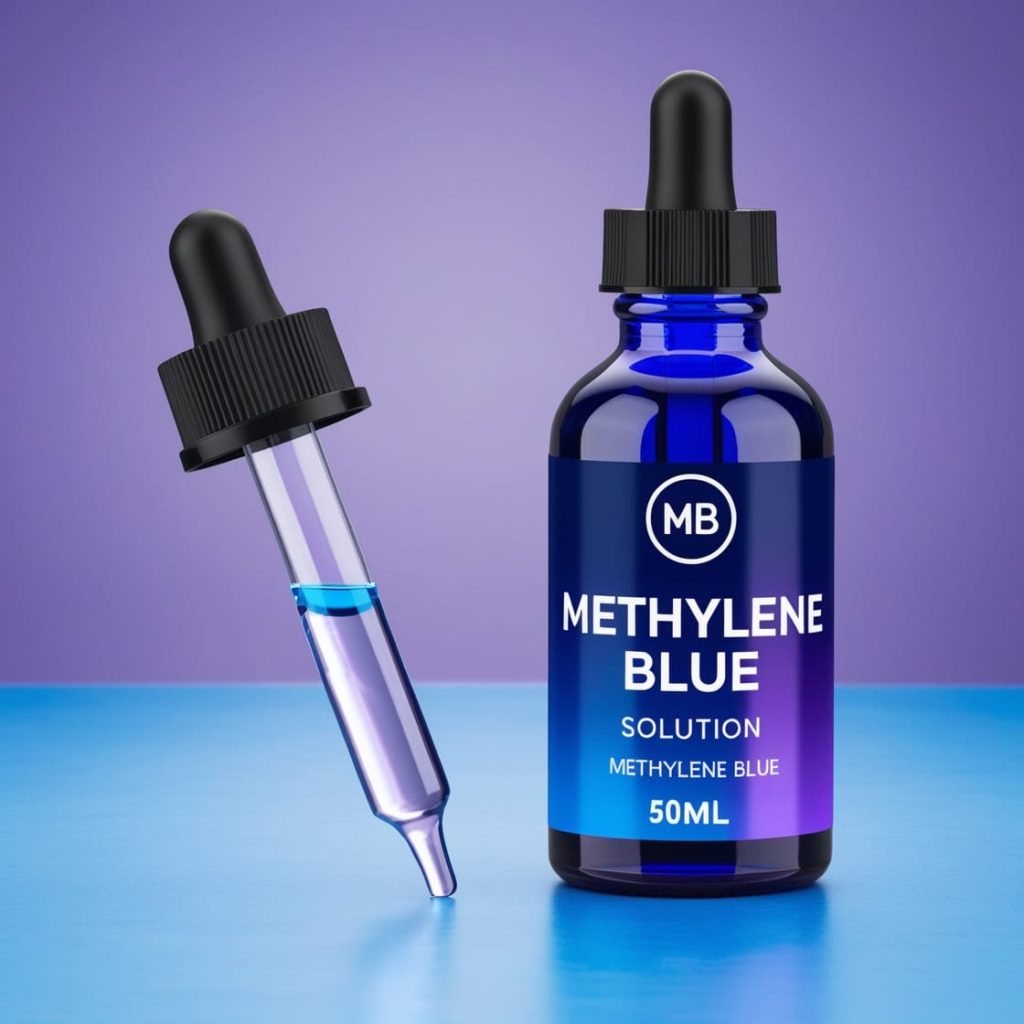Unlocking the Potential of Methylene Blue Solution: An In-Depth Guide
The versatile compound with a wide range of applications in both medical and non-medical fields!
Introduction
Methylene Blue Solution is a versatile compound with a wide range of applications in both medical and non-medical fields. Known for its vibrant blue color, this solution has been used for over a century to treat various conditions, from methemoglobinemia to malaria. This article delves into the history, benefits, uses, and scientific background of Methylene Blue Solution, providing a comprehensive guide for anyone interested in its multifaceted potential.
What is Methylene Blue Solution?
Methylene Blue Solution is a synthetic dye that belongs to the thiazine group. Originally synthesized in 1876, it has since found a myriad of uses in medicine, biology, and chemistry. The solution is typically prepared by dissolving methylene blue powder in water or saline, creating a stable and effective formulation for various applications.
Historical Background of Methylene Blue
Methylene Blue has a rich history dating back to its discovery in the late 19th century. Initially used as a textile dye, its medicinal properties were soon recognized, leading to its application in treating malaria during World War I. Since then, its use has expanded into various medical and scientific fields, showcasing its versatility and importance.
Chemical Properties of Methylene Blue
Understanding the chemical properties of Methylene Blue Solution is crucial for appreciating its wide range of applications. It is a heterocyclic aromatic chemical compound with the molecular formula C16H18ClN3S. It exhibits excellent stability and a strong blue color, which makes it useful as a stain and indicator in biological and chemical processes.
Medical Applications of Methylene Blue
Treatment of Methemoglobinemia
Methylene Blue is widely recognized for its ability to treat methemoglobinemia, a condition where hemoglobin is unable to release oxygen effectively to body tissues. By acting as a reducing agent, Methylene Blue helps convert methemoglobin back to hemoglobin, thereby restoring normal oxygen transport.
Antimalarial Properties
Historically, Methylene Blue was one of the first synthetic antimalarial drugs. Although less commonly used today, it remains a valuable tool in the fight against malaria, particularly in cases where resistance to other treatments is encountered.
Use in Neurosurgery
In neurosurgery, Methylene Blue is used as a visual aid to delineate neural structures during procedures. Its ability to selectively stain certain tissues helps surgeons achieve greater precision and safety during operations.
Photodynamic Therapy
Methylene Blue Solution is also employed in photodynamic therapy (PDT) for treating certain types of cancer. When exposed to light, it generates reactive oxygen species that can kill cancer cells, making it an effective adjunctive treatment.
Non-Medical Uses of Methylene Blue
Biological Staining
In the field of biology, Methylene Blue is a popular stain used to highlight cellular structures under the microscope. It is particularly useful in staining animal cells and identifying cellular components like nuclei and mitochondria.
Aquaculture and Aquarium Use
Aquarists often use Methylene Blue to treat fungal infections and parasites in fish. Its antiseptic properties make it an effective treatment for a variety of aquatic diseases, promoting the health and longevity of fish.
Chemical Analysis
Methylene Blue serves as an indicator in various chemical analyses, including redox titrations. Its color change properties help in determining the endpoint of titrations and other analytical procedures.
Benefits of Methylene Blue Solution
Versatility
One of the primary benefits of Methylene Blue Solution is its versatility. From treating medical conditions to serving as a stain in biological research, its range of applications is vast and varied.
Efficacy
Methylene Blue is highly effective in its various uses, particularly in medical treatments. Its rapid action in reducing methemoglobin levels and its ability to target cancer cells in PDT are testament to its efficacy.
Cost-Effectiveness
Compared to many other treatments and compounds, Methylene Blue is relatively inexpensive, making it an accessible option for many applications, especially in resource-limited settings.
Safety and Side Effects
Common Side Effects
While Methylene Blue is generally safe when used appropriately, it can cause some side effects. These may include mild gastrointestinal disturbances, headache, and dizziness. It is important for users to be aware of these potential reactions.
Precautions and Contraindications
Methylene Blue should be used with caution in individuals with certain conditions, such as G6PD deficiency, as it can trigger hemolysis. It is also contraindicated in patients taking serotonergic drugs due to the risk of serotonin syndrome.
How to Prepare and Use Methylene Blue Solution
Preparation Guidelines
Preparing Methylene Blue Solution involves dissolving the appropriate amount of methylene blue powder in a solvent, typically water or saline. It is crucial to follow proper guidelines to ensure the solution’s effectiveness and safety.
Dosage and Administration
The dosage of Methylene Blue varies depending on the intended use. For treating methemoglobinemia, a typical dose is 1-2 mg/kg administered intravenously. It is important to follow medical advice and guidelines when using this compound.
The Future of Methylene Blue
Ongoing Research
Research into Methylene Blue continues to uncover new potential uses and benefits. Studies are exploring its role in neuroprotection, cognitive enhancement, and even its potential to mitigate symptoms of certain neurodegenerative diseases.
Innovations in Application
Advancements in delivery methods and formulations are enhancing the effectiveness and convenience of Methylene Blue use. Innovations such as targeted delivery systems and combination therapies hold promise for expanding its applications.
FAQs
What is Methylene Blue Solution used for?
Methylene Blue Solution is used for treating methemoglobinemia, as an antimalarial, in photodynamic therapy, and as a biological stain, among other applications.
Is Methylene Blue safe to use?
Yes, Methylene Blue is generally safe when used as directed. However, it can cause side effects and should be used with caution in certain individuals.
Can Methylene Blue treat COVID-19?
There is no conclusive evidence that Methylene Blue can treat COVID-19. It is primarily used for other medical conditions.
How is Methylene Blue administered?
Methylene Blue can be administered intravenously, orally, or topically, depending on the condition being treated.
Are there any alternatives to Methylene Blue?
Alternatives depend on the specific use. For methemoglobinemia, ascorbic acid is an alternative treatment. For biological staining, other dyes like crystal violet can be used.
Where can I purchase Methylene Blue Solution?
Methylene Blue Solution can be purchased from pharmaceutical suppliers, scientific research companies, and online retailers specializing in medical and laboratory products.
Conclusion
Methylene Blue Solution is a remarkable compound with a wide array of applications across various fields. From its historical significance in treating malaria to its modern-day use in photodynamic therapy and beyond, Methylene Blue continues to be a valuable tool in both medicine and science. Understanding its benefits, uses, and potential side effects can help harness its full potential, making it a staple in many professional and personal applications.
External Resources
Products
-
 Blue Lotus Extract 100:1 – 50 g
Rated 0 out of 5
Blue Lotus Extract 100:1 – 50 g
Rated 0 out of 5$120.00Original price was: $120.00.$100.00Current price is: $100.00. -
 Blue Lotus Extract 100:1 – 20 g
Rated 0 out of 5
Blue Lotus Extract 100:1 – 20 g
Rated 0 out of 5$70.00Original price was: $70.00.$50.00Current price is: $50.00. -
 Blue Lotus Extract 100:1 – 10 g
Rated 0 out of 5
Blue Lotus Extract 100:1 – 10 g
Rated 0 out of 5$40.00Original price was: $40.00.$30.00Current price is: $30.00. -
 Organic Dried Whole Blue Lotus Flowers – 100 g
Rated 0 out of 5
Organic Dried Whole Blue Lotus Flowers – 100 g
Rated 0 out of 5$100.00Original price was: $100.00.$80.00Current price is: $80.00. -
 Organic Dried Whole Blue Lotus Flowers – 25 g
Rated 0 out of 5
Organic Dried Whole Blue Lotus Flowers – 25 g
Rated 0 out of 5$30.00Original price was: $30.00.$20.00Current price is: $20.00.

